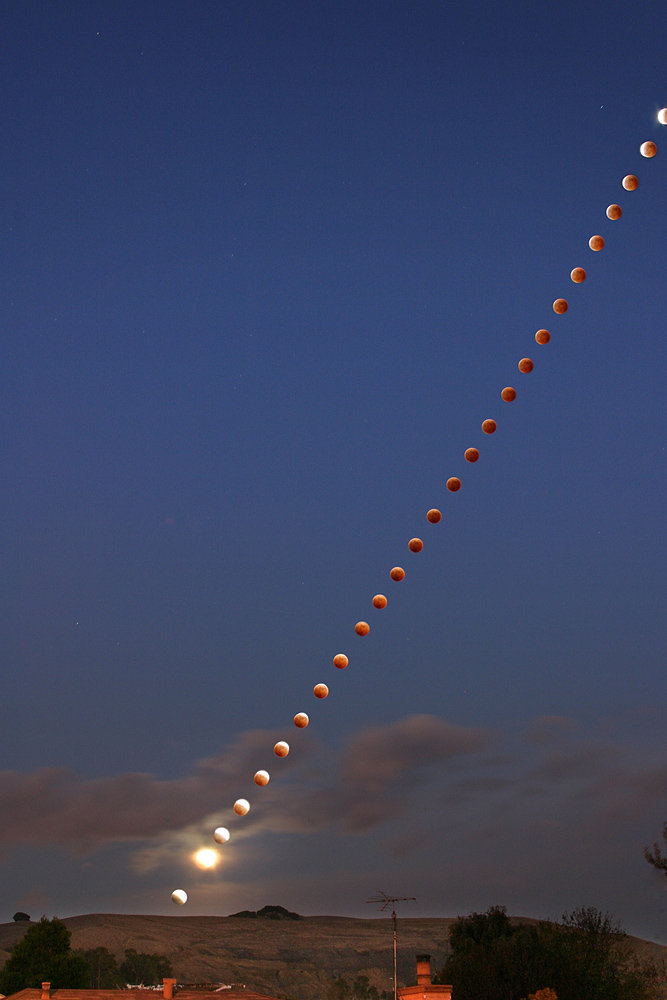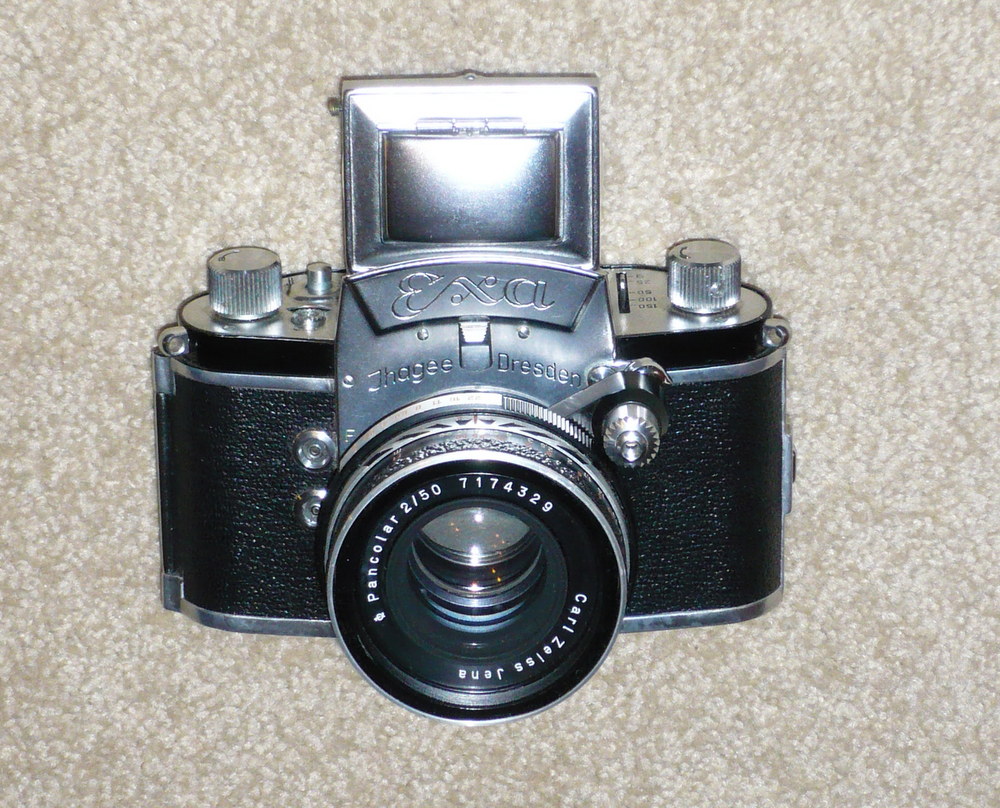|
EOS 650
The Canon EOS 650 is a 35 mm single-lens reflex camera. It was introduced on 2 March 1987, Canon's 50th anniversary, and discontinued in February 1989. It was the first camera in Canon's new EOS series, which was designed from scratch to support autofocus lenses. The EOS system features the new EF lens mount, which uses electrical signals to communicate between the camera and the lens. Focusing and aperture control are performed by electric motors mounted in the lens body. The EF mount is still used on Canon SLRs, including digital models. Canon's previous FD mount lenses are incompatible with EOS bodies. Canon's first EOS camera had the latest technologies, including a microprocessor and a Canon-developed BASIS sensor for high-precision AF. Canon claimed incomparable autofocusing for the EOS 650. A range of high-precision ultrasonic motor EF autofocus lenses were also developed successfully for the 650. An EOS 650 was used in 1992 to take the first photographic image that wa ... [...More Info...] [...Related Items...] OR: [Wikipedia] [Google] [Baidu] |
135 Film
file:135film.jpg, 135 film. The film is wide. Each image is 24×36 mm in the most common "small film" format (sometimes called "double-frame" for its relationship to the "single-frame" 35 mm movie format or full frame after the introduction of 135 sized digital sensors; confusingly, "full frame" was also used to describe the Full frame (cinematography), full gate of the movie format half the size). file:LEI0060 186 Leica I Sn.5193 1927 Originalzustand Front-2 FS-15.jpg, Leica I, 1927, the first successful camera worldwide for 35 cine film 135 film, more popularly referred to as 35 mm film or 35 mm, is a format of photographic film with a film gauge of loaded into a standardized type of magazine (also referred to as a cassette or cartridge) for use in 135 film cameras. The term 135 was introduced by Kodak in 1934 as a designation for 35 mm film specifically for still photography, perforated with Kodak Standard perforations. It quickly grew in populari ... [...More Info...] [...Related Items...] OR: [Wikipedia] [Google] [Baidu] |
Canon FD
The Canon FD lens mount is a physical standard for connecting a photographic lens to a 35mm single-lens reflex camera body. The standard was developed by Canon of Japan and was introduced in March 1971 with the Canon F-1 camera. It served as the Canon SLR interchangeable lens mounting system until the 1987 introduction of the Canon EOS series cameras, which use the newer EF lens mount. The FD mount lingered through the release of the 1990 Canon T60, the last camera introduced in the FD system, and the end of the Canon New F-1 product cycle in 1992. Overview The FD mount is mechanically compatible with and replaced Canon's earlier FL mount,which in turn had replaced the R mount; FD-mount cameras can use FL lenses in stop-down metering mode and R lenses will mount, but must be used with manual aperture and stop-down metering. Though never officially explained by Canon, others have attempted to assign a meaning to the "FD" designation. One such attempt states that the "FD" ... [...More Info...] [...Related Items...] OR: [Wikipedia] [Google] [Baidu] |
Canon EOS RT
The Canon EOS RT is a 35mm single-lens reflex camera produced by Canon and sold from 1989 to 1992. The camera is essentially an EOS 630/ EOS 600 with a pellicle mirror. Only 25,000 were manufactured at the end of the EOS 630 production run, so the EOS RT was technically "out of production" before it ever went on sale. The EOS RT was the first autofocus camera to feature a pellicle mirror, followed by the EOS 1N RS five years later. Canon had made a few manual focus pellicle mirror SLR bodies previously, including the Pellix, Pellix QL, and special limited-production cameras made for professional photographers at the 1972 and 1984 Olympic Games (the F-1 and New F-1 High Speed Motor Drive models respectively). Pellicle mirrors offer some of the advantages of a rangefinder camera in an SLR. When taking a picture with a typical SLR camera, the mirror must flip upwards to move out of the way to allow light to pass from the lens to the film plane (or digital image sensor). ... [...More Info...] [...Related Items...] OR: [Wikipedia] [Google] [Baidu] |
Flash Sync
In photography, flash synchronization or flash sync is the synchronizing the firing of a Flash (photography), photographic flash with the opening of the Shutter (photography), shutter admitting light to photographic film or electronic image sensor. In cameras with mechanical (clockwork) shutters synchronization is supported by an electrical contact within the shutter mechanism, which closes the circuit at the appropriate moment in the shutter opening process. In electronic digital cameras, the mechanism is usually a programmable electronic timing circuit, which may, in some cameras, take input from a mechanical shutter contact. The flash is connected electrically to the camera either by a cable with a standardized coaxial Prontor-Compur, PC (for Prontor/Compur) connector (as defined in ISO 519), or via contacts in an ''accessory mount'' (hot shoe) bracket. Faster shutter speeds are often better when there is significant ambient illumination, and flash is used to flash fill ... [...More Info...] [...Related Items...] OR: [Wikipedia] [Google] [Baidu] |
Multiple Exposure
In photography and cinematography, a multiple exposure is the superimposition of two or more exposures to create a single image, and double exposure has a corresponding meaning in respect of two images. The exposure values may or may not be identical to each other. Overview Ordinarily, cameras have a sensitivity to light that is a function of time. For example, a one-second exposure is an exposure in which the camera image is equally responsive to light over the exposure time of one second. The criterion for determining that something is a double exposure is that the sensitivity goes up and then back down. The simplest example of a multiple exposure is a double exposure without flash, i.e. two partial exposures are made and then combined into one complete exposure. Some single exposures, such as "flash and blur" use a combination of electronic flash and ambient exposure. This effect can be approximated by a Dirac delta measure (flash) and a constant finite rectangular window, ... [...More Info...] [...Related Items...] OR: [Wikipedia] [Google] [Baidu] |
Digital Single-lens Reflex Camera
A digital single-lens reflex camera (digital SLR or DSLR) is a digital camera that combines the optics and mechanisms of a single-lens reflex camera with a solid-state image sensor and digitally records the images from the sensor. The reflex design scheme is the primary difference between a DSLR and other digital cameras. In the reflex design, light travels through the lens and then to a mirror that alternates to send the image to either a prism, which shows the image in the optical viewfinder, or the image sensor when the shutter release button is pressed. The viewfinder of a DSLR presents an image that will not differ substantially from what is captured by the Image sensor, camera's sensor, as it presents it as a direct optical view through the main camera lens rather than showing an image through a separate secondary lens. DSLRs largely replaced film-based SLRs during the 2000s. Major camera manufacturers began to transition their product lines away from DSLR cameras to mirror ... [...More Info...] [...Related Items...] OR: [Wikipedia] [Google] [Baidu] |
Canon EOS 5D Mark III
The Canon EOS 5D Mark III is a professional-grade 22.3 megapixel full-frame digital single-lens reflex (DSLR) camera made by Canon. Succeeding the EOS 5D Mark II, the Mark III was announced on 2 March 2012. This date coincided with the 25th anniversary of the announcement of the first camera in the EOS line, the EOS 650, and was also Canon's 75th anniversary. The Mark III went on sale later in March with a retail price of $3,499 in the US, £2999 in the UK, and €3569 in the Eurozone. On 25 August 2016, Canon announced the camera's successor, the Canon EOS 5D Mark IV. Features New features over the EOS 5D Mark II are: * Resolution increased to 22.3 effective megapixels full-frame CMOS sensor (5D Mark II has 21.0 megapixels) * DIGIC 5+ image processor (as opposed to the DIGIC 4) * Maximum ISO speed increased to ISO 25600 (50, 51200, 102400 as optional expanded settings) – Compared to ISO 6400 (50, 12800, and 25600 as optional expanded settings) * New 61-point autofocus ... [...More Info...] [...Related Items...] OR: [Wikipedia] [Google] [Baidu] |
Les Horribles Cernettes
''Les Horribles Cernettes'' (, "The Horrible CERN Girls") was an all-female parody pop group, self-labelled "the one and only High Energy Rock Band", which was founded by employees of CERN and performed at CERN and other HEP-related events. Their main claim to fame is that a photograph of them was the earliest photographic image shared on the World Wide Web. Their musical style is often described as doo-wop. The initials of their name, LHC, are the same as those of the Large Hadron Collider, which was later built at CERN. Their humorous songs are freely available on their website. History ''Les Horribles Cernettes'' was founded in 1990 by Michele de Gennaro, a graphic designer at CERN, whose romantic relationship with a physicist was made difficult by his numerous shifts. She attracted attention by stepping on stage during the CERN Hardronic Festival, singing "Collider", a melancholy song about the lonely nights endured by the girlfriend of a high energy physicist. The group ... [...More Info...] [...Related Items...] OR: [Wikipedia] [Google] [Baidu] |
World Wide Web
The World Wide Web (WWW or simply the Web) is an information system that enables Content (media), content sharing over the Internet through user-friendly ways meant to appeal to users beyond Information technology, IT specialists and hobbyists. It allows documents and other web resources to be accessed over the Internet according to specific rules of the HTTP, Hypertext Transfer Protocol (HTTP). The Web was invented by English computer scientist Tim Berners-Lee while at CERN in 1989 and opened to the public in 1993. It was conceived as a "universal linked information system". Documents and other media content are made available to the network through web servers and can be accessed by programs such as web browsers. Servers and resources on the World Wide Web are identified and located through character strings called uniform resource locators (URLs). The original and still very common document type is a web page formatted in Hypertext Markup Language (HTML). This markup lang ... [...More Info...] [...Related Items...] OR: [Wikipedia] [Google] [Baidu] |
Ultrasonic Motor
An ultrasonic motor is a type of piezoelectric motor powered by the ultrasonic vibration of a component, the stator, placed against another component, the rotor or slider depending on the scheme of operation (rotation or linear translation). Ultrasonic motors differ from other piezoelectric motors in several ways, though both typically use some form of piezoelectric material, most often lead zirconate titanate and occasionally lithium niobate or other single-crystal materials. The most obvious difference is the use of resonance to amplify the vibration of the stator in contact with the rotor in ultrasonic motors. Ultrasonic motors also offer arbitrarily large rotation or sliding distances, while piezoelectric actuators are limited by the static strain that may be induced in the piezoelectric element. One common application of ultrasonic motors is in camera lenses where they are used to move lens elements as part of the auto-focus system. Ultrasonic motors replace the noisier and ... [...More Info...] [...Related Items...] OR: [Wikipedia] [Google] [Baidu] |
Electric Motor
An electric motor is a machine that converts electrical energy into mechanical energy. Most electric motors operate through the interaction between the motor's magnetic field and electric current in a electromagnetic coil, wire winding to generate Laplace force in the form of torque applied on the motor's shaft. An electric generator is mechanically identical to an electric motor, but operates in reverse, converting mechanical energy into electrical energy. Electric motors can be powered by direct current (DC) sources, such as from batteries or rectifiers, or by alternating current (AC) sources, such as a power grid, Inverter (electrical), inverters or electrical generators. Electric motors may also be classified by considerations such as power source type, construction, application and type of motion output. They can be brushed motor, brushed or brushless motor, brushless, single-phase electric power, single-phase, two-phase electric power, two-phase, or three-phase electric p ... [...More Info...] [...Related Items...] OR: [Wikipedia] [Google] [Baidu] |
Single Lens Reflex
In photography, a single-lens reflex camera (SLR) is a type of camera that uses a mirror and prism system to allow photographers to view through the lens and see exactly what will be captured. SLRs became the dominant design for professional and consumer-level cameras throughout the late 20th century, offering interchangeable lenses, through-the-lens (TTL) metering, and precise framing. Originating in the 1930s and popularized in the 1960s and 70s, SLR technology played a crucial role in the evolution of modern photography. Although digital single-lens reflex (DSLR) cameras succeeded film-based models, the rise of mirrorless cameras in the 2010s has led to a decline in SLR use and production. With twin lens reflex and rangefinder cameras, the viewed image could be significantly different from the final image. When the shutter button is pressed on most SLRs, the mirror flips out of the light path and allows light to pass through to the light receptor and the image to be captured. ... [...More Info...] [...Related Items...] OR: [Wikipedia] [Google] [Baidu] |





